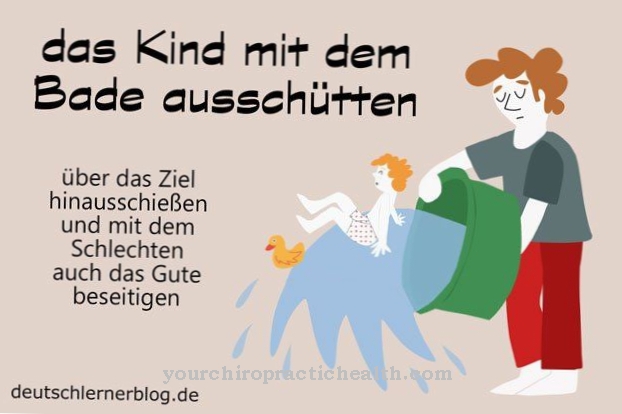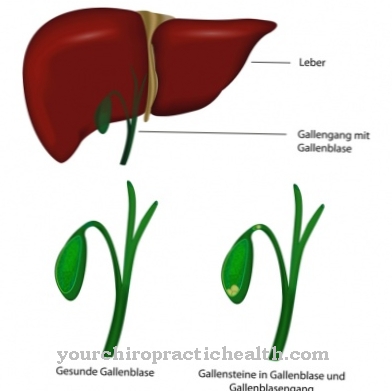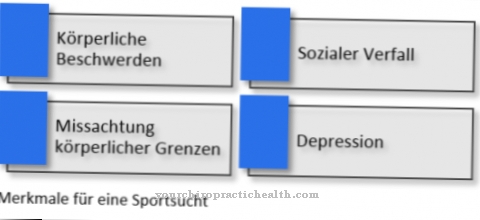The Breech position is a position of the unborn child that deviates from the norm in the womb beyond the 34th week of pregnancy. The child lies with the head up instead of down as in the normal skull position. The rump or legs are at the bottom of the uterus. About five percent of all children are in a breech position at birth.
Forms of breech position
Up to the 34th week of pregnancy, all unborn babies lie upside down in the uterus. With increasing lack of space, they then turn themselves upside down into the skull position. If this rotation does not take place, one speaks of one Breech position. There are different variants of this birth position.
The most common form, with more than 60 percent, is the complete breech position. It is not uncommon that only one leg is pointed upwards. It can also happen that both legs of the child are pointing upwards and the rump is down. In the complete coccyx-foot position, both legs are crouched. In the mixed forms there are the knee layers (one or both knees down), the foot layers (one or both feet down).
causes
About half of the breeches have no medically identifiable cause. In more than 50 percent, the mother gives birth to first child, and there is also a familial accumulation. Women and men who were born in breeches themselves are up to three times more likely to have breeches.
Multiples also lie in breeches in the womb more than average. In twins, the incidence is about a third. Other risk factors for this deviation are head deformities, an umbilical cord that is too short or tangled, and too little or too much amniotic fluid. Uterine malformations and certain pelvic shapes of the mother also favor the occurrence of breeches.
Breech Risks
The risks of a breech position consist of an insufficient supply of oxygen to the child and injuries during the birth itself. Folding the arms during the birthing process can prevent the head from penetrating. The obstetricians then have to manually release the arms from this position. This can lead to broken arms and muscle injuries. The umbilical cord is also compressed faster in the breech position than in a normal birth.
This can lead to an insufficient supply of oxygen to the child and, in the worst case, to brain damage. A torticollis caused by muscle tension also occurs in up to 70 percent of breech births. A breech birth is more exhausting for the expectant mother, as it often takes longer than a normal birth. The particularly stressful pressing phase can also drag on longer than with a cranial position birth because the child's large head only comes at the end.
Vaginal delivery or caesarean section?
Vaginal birth is generally possible with a breech position, but is rarely recommended these days. It requires an experienced team of obstetricians. Relatively few clinics offer the possibility of spontaneous delivery in the breech position.
In the case of a simple breech position, a birth age of over 34 weeks and if the mother or child is not suffering from any illnesses, there is basically nothing to prevent spontaneous delivery. The quadruped position is recommended as the birthing position, as the child can be born in this largely independently. Normally, no additional manipulations by the obstetrician are then necessary.
If the birth weight is estimated to be more than 3500 grams, the bladder ruptures prematurely, the mother or child is ill or the child is in a straight head position, a caesarean section is recommended. This also applies to a relatively high age at birth of the mother and an above-average head circumference of the child.
Outward twist in breech position
The external twist in the case of a breech position of the child is one way of bringing it into the skull position after all. This is possible from the 36th week of pregnancy. An experienced obstetrician exerts pressure on the unborn child from the outside and turns it into the skull position. There are risks associated with this procedure: umbilical cord complications, vaginal bleeding, and premature placenta loosening can occur.
The success rate is around 60 percent, and the risk of complications is around three percent. A surgical team should always be available so that a cesarean section can be performed immediately in the event of a complication. Because an external change is only possible in the late phase of pregnancy, the children are already mature enough for birth with such a caesarean section.
Acupuncture and moxibustion (heating of specific points on the body) are also discussed as methods for a twist. These are procedures from traditional Chinese medicine. However, these have not been scientifically proven.
Everything will be fine!
Many women worry unnecessarily early on about a breech position. Most of the time, however, the children turn spontaneously into the skull position. In the case of breeches, the decision for vaginal delivery or a caesarean section always rests with the mother. This also applies to the decision to take an external turn.
It is important to have detailed medical advice that explains in detail the possibilities and risks. Regardless of whether it is a caesarean section or spontaneous delivery, children with breeches do not differ in their development from children with the cranium. Regardless of the type of delivery, pain and fears are usually quickly forgotten and the joy of the miracle of the new life predominates.




























